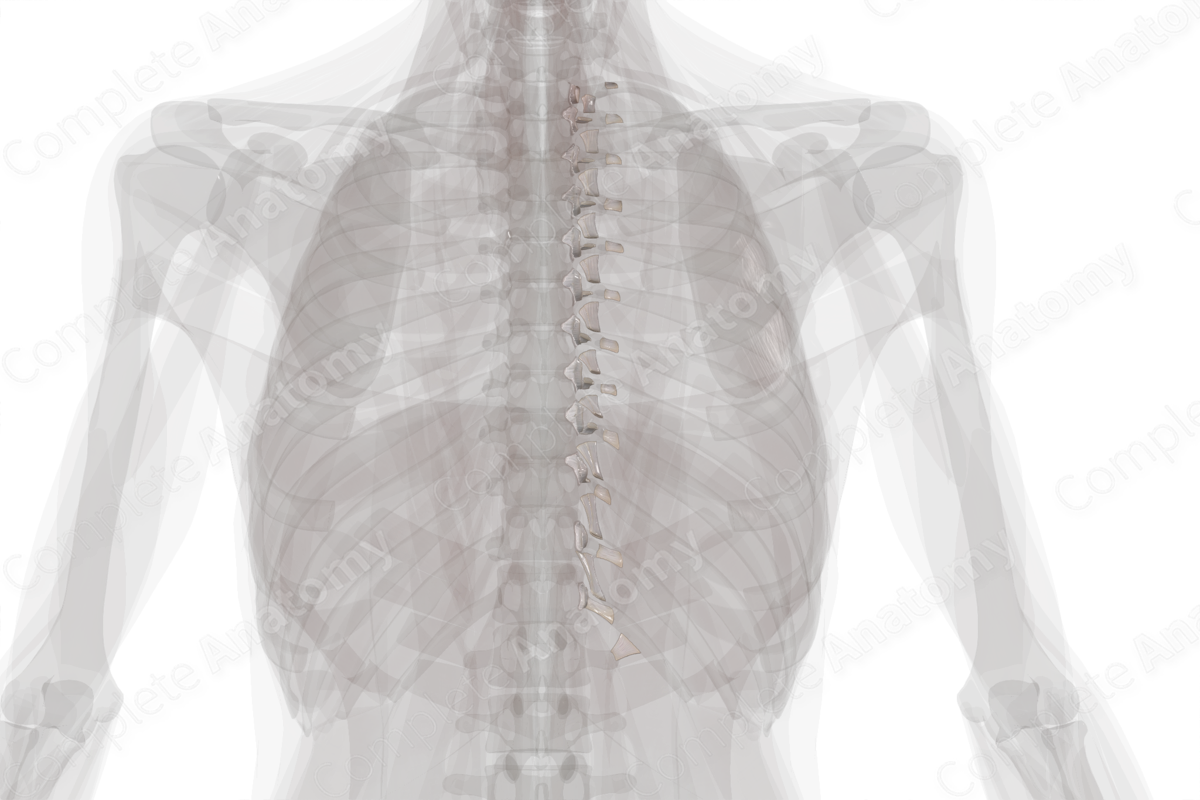
Description
The costovertebral joints refer to the synovial articulations between the ribs and the vertebrae. They include the joints of the head of the ribs and the costotransverse joints.
The joints of the head of the ribs are formed where the facets (or demifacets) of the head of the rib articulate with their corresponding vertebral body, the body of the vertebra above, and the intervening intervertebral discs. For example, the fifth rib articulates with the superior costal facet of the body of the fifth vertebra, the inferior costal facet of the body of the fourth vertebra, and the intervertebral disc between these vertebrae. Note that the heads of the 1st, 10th (sometimes), 11th, and 12th ribs only articulate with one vertebral body of the same number. The joints of the head of the ribs are reinforced by the radiate ligaments. Additionally, an intraarticular ligament bisects the synovial joint in two. The first, tenth, eleventh, and twelfth ribs only articulate with its corresponding vertebral body, thus producing only a single synovial joint.
The costotransverse joint refers to the synovial articulation of the facet of the costal tubercle on the neck of the rib with the transverse processes of a corresponding vertebra. The 11th and 12th ribs lack this articulation. The joint is reinforced by the costotransverse, superior costotransverse, and lateral costotransverse ligaments. There is usually an accessory ligament found medial to the superior costotransverse ligament, but its attachment is often variable.
Learn more about this topic from other Elsevier products





